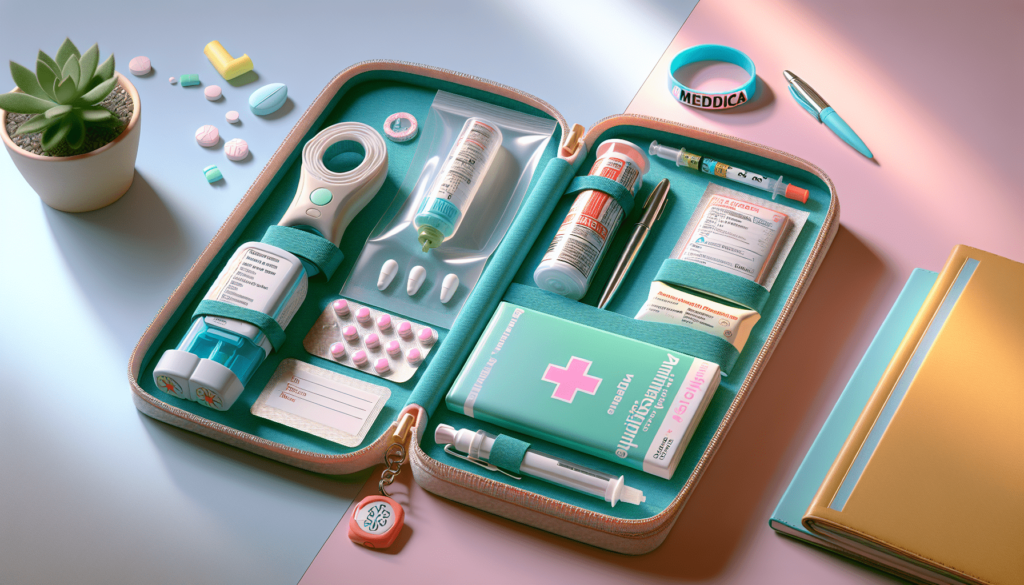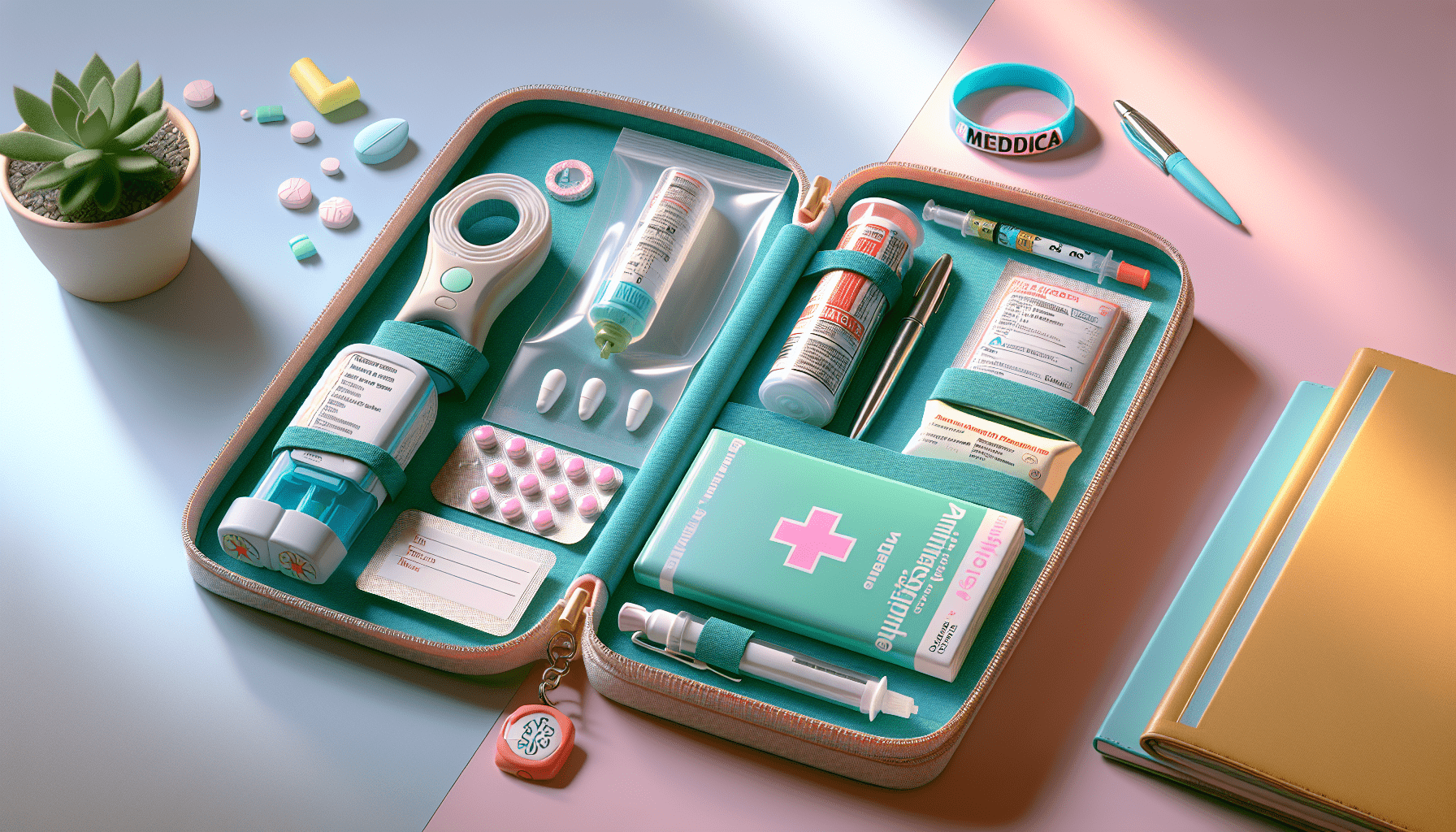Have you ever found yourself feeling unprepared when your child experiences an unexpected allergic reaction? As a parent or caregiver, being ready for such instances is crucial to ensuring your child’s safety and well-being. Creating a Child’s Allergy Emergency Kit is an important step, but it can be a little daunting if you’re not sure what to include. This guide is here to help you assemble an effective kit, tailored specifically for your child’s needs.

Understanding Allergic Reactions
Before diving into the specific items, it’s important to understand what an allergic reaction is. Allergic reactions occur when your child’s immune system overreacts to an allergen, which can be something they eat, touch, or inhale. Common allergens include foods like peanuts, tree nuts, shellfish, and certain medications. Reactions can range from mild symptoms such as itching or hives, to severe symptoms including breathing difficulties or anaphylaxis—a life-threatening condition.
Common Symptoms to Recognize
Recognizing the symptoms of an allergic reaction can make a difference in how quickly you respond. Being observant and understanding what these signs are will allow you to act swiftly and efficiently:
-
Mild Symptoms: These can include itching, rash, hives, sneezing, stuffy nose, or mild abdominal discomfort.
-
Moderate Symptoms: More noticeable reactions might involve coughing, wheezing, trouble swallowing, swelling of the lips, tongue, or face.
-
Severe Symptoms (Anaphylaxis): This is a serious and immediate condition involving symptoms like difficulty breathing, a rapid or weak pulse, dizziness or fainting, and a sense of impending doom.
Building Your Child’s Allergy Emergency Kit
Now that you understand what to look for, let’s focus on what your child may need during an allergic reaction. A well-prepared Allergy Emergency Kit will give you peace of mind and help you remain composed during emergency situations.
Epinephrine Auto-Injector
The most critical item in any allergy emergency kit is the epinephrine auto-injector, sometimes known by brand names such as EpiPen or Auvi-Q. This is a life-saving device designed to rapidly deliver a dose of epinephrine during a severe allergic reaction.
-
Why is it important? Epinephrine is the first-line treatment for anaphylaxis. It can quickly reverse the symptoms, giving you additional time to seek emergency medical care.
-
Key tip: Always carry two, because there’s a small chance the first dose might not be enough, and it’s essential to have a backup.
Antihistamines
Over-the-counter antihistamines are another essential component, useful for treating mild reactions or serving as follow-up care after administering epinephrine for moderate to severe reactions.
- Types to consider: Liquid antihistamines like diphenhydramine (Benadryl) are beneficial because they’re quickly absorbed, but make sure to consult your pediatrician for a suitable option for your child’s age and medical conditions.
Inhaler or Bronchodilator
If your child has asthma in addition to allergies, you’ll want to include their prescribed inhaler or bronchodilator. Attacks often accompany allergic reactions and this can be a crucial step in alleviating respiratory symptoms.
Personalized Allergy Action Plan
A tailored allergy action plan guides you step-by-step through recognizing symptoms and administering the necessary treatment. This should include:
- Emergency contacts
- Your child’s specific allergens
- Instructions on how to use the auto-injector and other medications
- Specific symptoms to watch for
Allergy Identification
Ensure your child wears or carries allergy identification, which communicates their allergies to teachers, after-school staff, or emergency responders when you’re not present.
-
Medical ID Bracelet: A bracelet engraved with your child’s allergies and emergency contact information.
-
ID Card: Keep a laminated card containing detailed information inside the emergency kit.
Emergency Contact List
Keeping an updated list of contacts is vital. Along with family member contacts, include your child’s pediatrician, allergist, and local emergency services.
Preparing Your Child for an Allergy Emergency
While you build the emergency kit, it’s just as vital to prepare your child and those around them for a possible allergic reaction. Here’s how you can do that:
Teach Your Child
Educate your child about their allergies in age-appropriate language. Teach them to communicate their allergies to adults and peers, and why they need to avoid specific allergens.
Practice Using the Kit
Go over each component of the allergy emergency kit with your child. Show them how to use the epinephrine auto-injector trainer device, so they feel more comfortable in emergencies.
Inform Caregivers and Teachers
Make sure that every person responsible for your child knows how to recognize and respond to an allergic reaction. Provide training or demonstrations, if possible, and leave extra kits at places like school or daycare centers.
Maintenance and Review of the Kit
Your child’s allergy kit needs regular maintenance to ensure it’s always ready for use:
Check Expiration Dates
Epinephrine injectors and most medications have expiration dates. Make it a habit to regularly check these dates and replace items as needed.
Update the Allergy Action Plan
Changes can occur with your child’s allergies or prescribed medications. Regularly review and update the allergy action plan with your child’s doctor.
Replenish Supplies
After using the kit, promptly replace any spent components so you’re never caught without it.

Additional Tips for Managing Allergies
Managing allergies extends beyond just having an emergency kit. Here are additional tips to ensure your child can live with allergies comfortably and safely:
Educate Yourself Continuously
Allergy management is evolving, and new treatments and guidelines frequently appear. Staying informed through reliable sources and regular consultations with allergists can boost your readiness.
Diet Management
Work with a nutritionist, if necessary, to create a balanced, allergen-free diet for your child. Ensuring proper nutrition despite allergies will support their overall health and well-being.
Safe Environment
Strive to make your home and your child’s other environments as allergy-safe as possible. This could include reading food labels carefully, informing restaurants about dietary restrictions, and avoiding cross-contamination in the kitchen.
Foster a Supportive Community
Connect with other parents or caregivers who have children with similar allergies. You can share experiences, advice, and create a network that supports each other.
Conclusion
Creating an Allergy Emergency Kit is a crucial step in ensuring your child’s safety and your peace of mind. As you gather the essential items, tailor them to your child’s specific needs and ensure everyone involved in your child’s care knows how to use them. Regular maintenance and education amplify the kit’s effectiveness. By taking these proactive measures, you empower yourself and your child to handle allergic emergencies with confidence and assurance.
